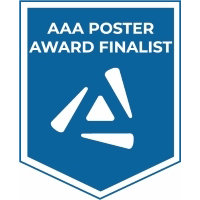Back
ANATOMY
Category: Anatomy
Session: 637 Evolution and Comparative Anatomy
(637.5) Patterns of secondary palate convergence across Amniota
Monday, April 4, 2022
10:15 AM – 12:15 PM
Location: Exhibit/Poster Hall A-B - Pennsylvania Convention Center
Poster Board Number: C126
Introduction: AAA has separate poster presentation times for odd and even posters.
Odd poster #s – 10:15 am – 11:15 am
Even poster #s – 11:15 am – 12:15 pm
Introduction: AAA has separate poster presentation times for odd and even posters.
Odd poster #s – 10:15 am – 11:15 am
Even poster #s – 11:15 am – 12:15 pm
Zachary Morris (Yale University), Bhart-Anjan Bhullar (Yale University)
Zachary Morris
Presenting Author
Yale University
Presenting Author(s)
Living amniotes (mammals, birds, and ‘reptiles’) display a tremendous disparity in craniofacial form and composition, reflecting over 300 million years of evolutionary divergence. The anatomical specialization and ecological diversification of amniotes makes it relatively trivial to distinguish a modern mammal skull from a bird or a turtle from a crocodylian. Despite the anatomical divergences, the roof of the mouth reveals remarkable similarities across these major clades. In fact, mammals, crocodylians, and some lizards have independently derived “secondary palates” which divide the nasal and oral passages (to greater or lessor degrees). However, this conspicuous example of convergent evolution has yet to be characterized in a quantitative analysis. Several critical questions therefore remain poorly understood, including: how convergently similar are “secondary palates”? and are there multiple evolutionary pathways to achieve a “secondary palate”? To begin to address these questions, we captured palate shape using two-dimensional geometric morphometrics from representatives of all extant amniote clades, including all lineages which have been described as possessing “secondary palates”, and key representatives from the fossil record. This landmarking approach allowed for quantifying both the overall shape of the palate but also the key connections among palate elements. These data demonstrate that crocodylians and mammals possess remarkably similar palate anatomy, principally due to the presence of extensive palatal shelves on the maxilla and mid-line contact of the palatines. Other reptiles with putative “secondary palates” do not overlap with crocodylians but rather cluster with other lizards and turtles. There is much greater diversity in palate form observed among squamates, likely reflecting greater functional and/or ecological utility of the palate than in other amniote clades. Extant birds occupy a distinct region of morphospace, potentially reflecting the enlargement of the premaxillary component of the palate. The inclusion of extinct forms reveals that living clades possess substantially modified and derived palate forms compared with ancestral amniotes, regardless of whether they possess “secondary palates” or not. However, several key elements including the ectopterygoid and vomer could not be landmarked due to their absence or exclusion from the ventral surface of the palate in key taxa. There are important differences in the structure and function of the nasal passage among amniote clades, necessitating consideration of other ossified and unossified components when discussing the degree of convergence in palate form and potential explanatory factors. Incorporating the full three-dimensional anatomy of the palate will allow the inclusion of these additional elements and may reveal important nuance to the patterns recovered in this analysis. Future analyses capturing the full volumetric form of individual elements and the entire palate, using a combination of fixed and pseudo landmarks, will be conducted to assess the strength of the patterns recovered here.
Funding for this work was provided by the National Science Foundation (NSF-EAR-PF #195288) and Yale University.
Funding for this work was provided by the National Science Foundation (NSF-EAR-PF #195288) and Yale University.

